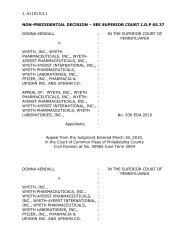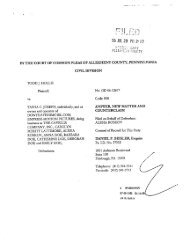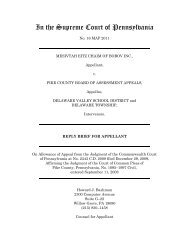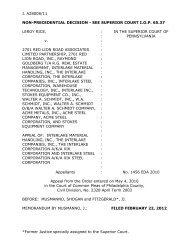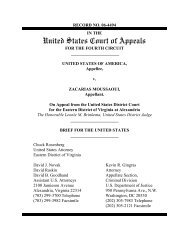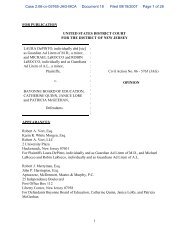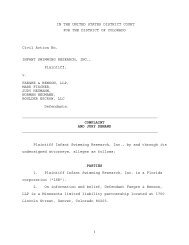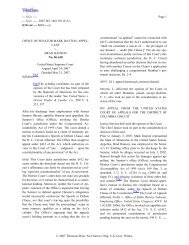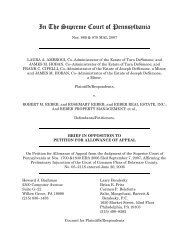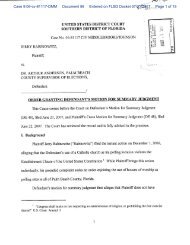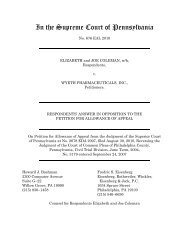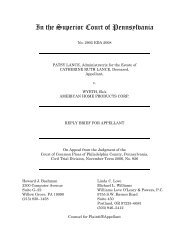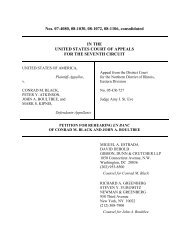Stone v. Bear, Stearns & Co., Inc. - How Appealing
Stone v. Bear, Stearns & Co., Inc. - How Appealing
Stone v. Bear, Stearns & Co., Inc. - How Appealing
Create successful ePaper yourself
Turn your PDF publications into a flip-book with our unique Google optimized e-Paper software.
Naranjo, 426 F.3d 221, 231 (3d Cir. 2005) (quoting Marks v. United States, 430 U.S. 188, 193<br />
(1977)).<br />
Given all this, reasonable minds can disagree about which opinion -- Justice Black’s or<br />
Justice White’s -- should guide us on the “evident partiality” question. <strong>Co</strong>mpare Positive Software<br />
Solutions, <strong>Inc</strong>. v. New Century Mortg. <strong>Co</strong>rp., 476 F.3d 278, 281-83 (5th Cir. 2007) (holding that<br />
Justice White’s concurrence controls and endorsing a practically-oriented “reasonable impression of<br />
bias” standard), with Crow <strong>Co</strong>nstr. v. Jeffrey M. Brown Assoc. <strong>Inc</strong>., 264 F. Supp. 2d 217, 220-24<br />
(E.D. Pa. 2003) (holding that Justice Black’s opinion controls and endorsing the “appearance of bias”<br />
standard). We happen to agree that Justice White’s concurring opinion better reflects the <strong>Co</strong>urt’s<br />
holding in <strong>Co</strong>mmonwealth <strong>Co</strong>atings, largely for the reasons articulated by the Positive Software<br />
Solutions court. In particular, this view properly “accords scope to the full White opinion, unlike the<br />
view that focuses on the introductory ‘glad to join’ sentence.” Positive Software Solutions, 476 F.3d<br />
at 282. Like other like-minded courts, we simply cannot reconcile the substance of Justice White’s<br />
concurrence with Justice Black’s opinion. This is the majority view today. Id. at 282-83 (cataloging<br />
cases).<br />
Case 2:11-cv-05118-LDD Document 22 Filed 05/29/12 Page 14 of 35<br />
In any event, it is not our decision to make. In Kaplan, the Third Circuit implicitly endorsed<br />
Justice White’s opinion as binding by fashioning the court’s “evident partiality” standard according<br />
to Apperson, 879 F.2d at 1358 (6th Cir.1989) and Leatherby, 714 F.2d at 681-82 (7th Cir. 1983). See<br />
Kaplan, 19 F.3d at 1523 n.30. Both Apperson and Leatherby, and by extension the Third Circuit,<br />
have concluded that the White opinion, not the Black opinion, controls the “evident partiality”<br />
inquiry. As such, the “appearance of bias” standard favored by <strong>Stone</strong> and derived from Justice<br />
Black’s plurality-plus opinion in <strong>Co</strong>mmonwealth <strong>Co</strong>atings does not govern our analysis in this case.<br />
14



